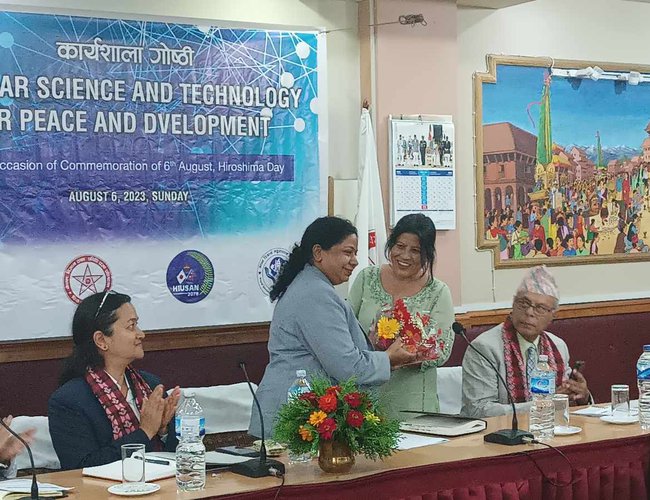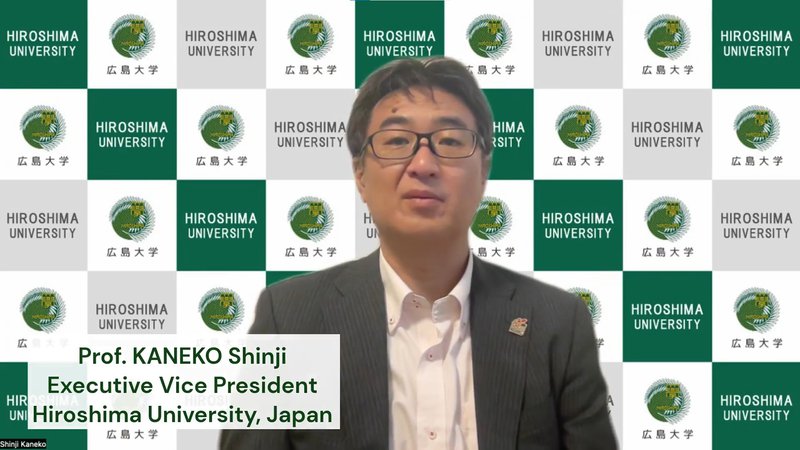
A world-changing calamity occurred on August 6, 1945. That calamity is now known as the Hiroshima and Nagasaki bombings. The bombing ended World War II and is the sole atomic bombing to this day. The incident sparked numerous debates, including the need to halt all nuclear power research, the use of nuclear power to accelerate tasks essential to human life, and the ethical implications of nuclear weapons.
Lise Meitner and Otto Frisch, two Jewish physicists, discovered nuclear fission, the process of splitting uranium atoms and releasing large amounts of energy, in January 1939. This discovery laid the groundwork for the development of the atomic weapon. Progress was made over time, and the United States launched the top-secret Manhattan Project, commanded by John F. Kennedy.
The Trinity test, conducted on July 16, 1945, demonstrated the atomic bomb's success. Following that, the United States dropped the "Little Boy" bomb on Hiroshima on August 6, 1945, and the "Fat Man" bomb on Nagasaki on August 9, 1945. These attacks prompted Japan's surrender on August 14, 1945, officially ending World War II in the Pacific on September 2, 1945, when Japanese delegates signed the surrender document.
The "Little Boy" bomb exploded around 1,900 feet over the city, instantaneously killing an estimated 70,000 people and injuring tens of thousands more in the weeks and months that followed due to radiation sickness. Three days later, on August 9, 1945, the second atomic bomb, "Fat Man," was dropped, killing approximately 40,000 people.
On August 6, Nepal commemorates the Hiroshima Incident Memorial Day, bringing together scientists, peace activists, and members of the general public. This event is dedicated to remembering the departed souls of the victims of the 1945 Japanese disaster. This year's anniversary also included conversations about how nuclear science and technology may help Nepal's development.
Nepal Commemoration Program
On the occasion of the 78th Hiroshima Day, the Ministry of Education, Science, and Technology (MoEST), Government of Nepal, in collaboration with the Nepal Academy of Science and Technology (NAST), Hiroshima University Scholar's Alumni Nepal (HiUSAN), and Nepal Development Research Institute (NDRI), organized a workshop titled "Workshop on Nuclear Science and Technology for Peace and Development" on August 6, 2023.
High-ranking government officials from various ministries and departments, academics, NAST scientists, non-governmental organizations, and private sector participants attended the event.
The Chief Guest, Pramila Kumari, State Minister of Education, Science, and Technology, emphasized the significance of Japan-Nepal bilateral relations and collaboration for Nepal's socioeconomic growth. She emphasized the importance of research and technological growth, for which such a workshop served as the foundation for bringing together young intellectuals, researchers, and scientists in a debate forum. She stressed that she is dedicated to moving on with the proposals and duties proposed by the researchers and scientists.
Prof. Dilip Subba, the recently appointed Vice Chancellor of the Nepal Academy of Science and Technology, said that nuclear energy has been utilized to protect foods and food irradiation globally. However, Nepal has not reached such a level yet and lacks adequate research and facilities in that sector.
The event's chairperson, Ms. Pramila Devi Bajracharya, Secretary of the Ministry of Education, Science, and Technology, stated that while the program was organized to commemorate the terrible bombing in Hiroshima 78 years ago, the event will be fruitful in discussing the positive aspects of technological advancement of nuclear science to use in the agriculture sector such as avoiding post-harvest loss, food safety, and technologically sound food ecosystem, et cetera.
Prof. Shinji Kaneko, Executive Vice President of Hiroshima University, stated that the aftermath of the Hiroshima and Nagasaki bombings profoundly influenced the international landscape of peace and security, creating a sense of urgency to prevent another Hiroshima or Nagasaki.

He highlighted that the nuclear weapon testing during the cold war had long-term consequences on human health and the global ecosystem, and that the threat of nuclear weapons remained the same as it was previously.
Inspired by the people of Hiroshima's experiences and goals, comparable social movements have formed since then, both within and outside of Japan, calling for and hoping for a peaceful future free of nuclear weapons. Prof. Kaneko mentioned that Hiroshima University was founded with the same vision of a peaceful world in mind. He expressed his gratitude to the Nepalese people for maintaining hope.
Bishow Babu Pudasaini, Joint Secretary of Nepal's Ministry of Education, Science, and Technology, presented a paper on the legal framework of nuclear science and technology in order to encourage science and technology in the country.
Dr. Jaya Kumar Gurung, Senior Research Expert at Nepal Development Research Institute (NDRI), presented a paper titled "Food for Thought" on the potential of E-beam technology. He discussed the possible use of E-beam technology in agricultural growth. He opened the floor to discussion on three primary points: the possibility of using nuclear science and technology in food irradiation, three key priorities to bring forward right now, and potential technological challenges.
Dr. Ranjan Prakash Shrestha, President of Hiroshima University Scholar's Alumni Nepal, spoke about the formation of HiUSAN and Prof. Shinji Kaneko's visit to NAST. He also helped Prof. Shinji Kaneko, Executive Vice President of Hiroshima University, deliver his speech.
The necessity for greater study in this area of nuclear physics was one of the main problems raised during the floor discussion in order to improve understanding among the general public and stakeholders. Utilizing nuclear science and technology has enormous promise, particularly in Nepal where food irradiation methods are being used. To do this, it is necessary to create clear legislative, regulatory, and safety requirements. Similar to this, it is crucial to support institutional setup, highly skilled human resources, and awareness among the key stakeholders in order to effectively apply nuclear science and technology (e-beam technology) for food irradiation in Nepal.

Like any other action, using nuclear bombs has advantages and disadvantages. The bombs of Hiroshima and Nagasaki mark a turning point in history, forever changing how people see war and posing difficult moral dilemmas regarding the use of nuclear weapons. In order to prevent the horrors of another nuclear war, reflection on these events is essential because it serves as a reminder of the significance of diplomatic efforts for peace and collaboration. In Nepal's situation, greater attention should be paid to how nuclear energy might be used for the country's growth and benefit.
Parmita Shrestha is an Intern with New Spotlight.
- NAGDHUNGA TUNNEL BREAKTHROUGH: Significant Milestone
- Apr 30, 2024
- Japanese Film Festival And Japan Day In Kathmandu
- Apr 09, 2024
- JENESYS Friendship Ties Program: Learning From Japan
- Feb 05, 2024
- JDS : Japan’s Support To Nepal
- Jul 31, 2023
- Japan’s Support To Nepal: Uplifting The Economy
- Jun 29, 2023

















